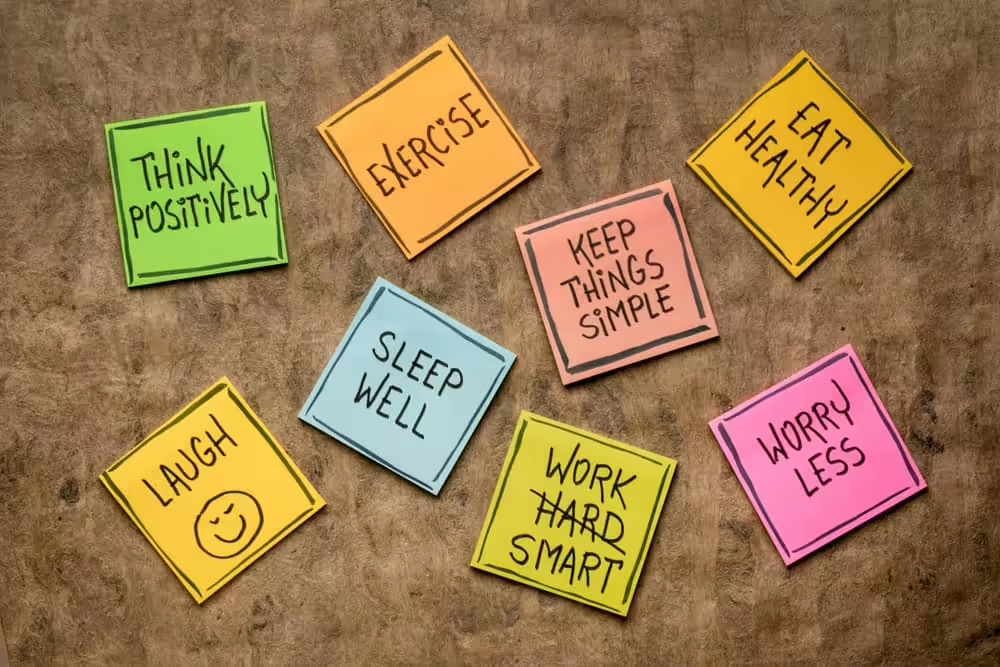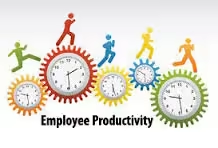It is prudent to note that spending more working hours does not necessarily translate it to increased efficiency. Employee productivity can also be affected by how happy the employees are. For an organisation to grow, there is a need for the employees to be very productive. This could be making small changes to habits which might have huge impacts on improving the productivity of the organisation. This will allow for more quality work done in a shorter period. It is reducing the amount spent on unnecessary tasks.
Since the past decade, for most organisations increasing employee productivity has been an important goal. Despite the current influx of varying technology in the workplace such as AI, automation, outsourcing and other software systems the majority is still people. In a survey conducted by Vouchercloud (2018), 79% of U.K. workers for instance said they were not being industrious throughout the entire workday. This shows that only 21% of employees in the UK believe that they are truly productive for an entire workday.
The average employee is only productive for 2 hours and 53 minutes per day. According to the Bureau of Labor Statistics (2021), Americans spend 8.8 hours a day in the workplace. But how many of those hours are they being productive?
What is employee productivity?

Productivity means a balance between all factors of production that will give the maximum output with the smallest effort.
Peter F. Drucker
Productivity is an attitude of mind. It is a mentality of progress, of the constant improvement of that which exists. It is the certainty of being able to do better than yesterday and continuously. It is a constant adaptation of the economic and social life to changing conditions. It is the continual effort to apply new techniques and method. It is faith in human progress.
European Productivity Council
Employee productivity implies a balance between all production factors that, with the lowest effort, will give the maximum output. Productivity is a mental attitude. It is a mindset of growth, of the continuous development of that which exists. Employee productivity ensures that it is efficient and profitable for the team. To achieve more and better results in less time, they use their work hours wisely. It's about more than getting stuff done to be productive. Theoretically, a person who tweets random content on your business page does something, but they are not exactly productive, right? However, this also depends on the type of work they do. For instance, if it is a social media marketer posting on the Twitter page then this could be productive.
Related: Revenue per Employee What you Need to Know
Ways to improve employee productivity
It is critical to improving employee productivity and there are effective ways to help you motivate an employee and boost their performance. According to Vouchercloud (2021), during one whole hour, an employee gets interrupted about 7 times, with each interruption taking up about 5 minutes of their working time. On average, people are disturbed once every 8 minutes in the workplace, which contributes to a decline in the workplace's average productivity. This means that, because of distractions, an employee can miss up to 4 hours of valuable working time during an 8-hour workday. A time management app is an ideal choice for many businesses for these reasons, as it can help workers avoid unwanted disruptions and interruptions while improving productivity as well.
Multitasking can hurt an employee’s productivity by 40%. According to Forbes (2021), multitasking will damage employees’ productivity rather than improve it. Studies have shown that it can be exhausting for the brain to continually move from one job to another, making an employee less successful. Trying to integrate the 1-3-5 rule into an employee’s daily schedule, instead of tackling too many things at once can help. This works by first approaching the most difficult tasks, before proceeding with medium-level tasks, and completing the day with the simplest and smallest tasks. The year 2020 has changed the way employees work. With more people working from home than ever before, at least temporarily, the workplace has changed, and so has productivity.
46% of people find working in a team incredibly tricky due to different working styles. According to Business News Daily (2020), teamwork appears not to always make the dream work. While 81% of workers regularly work in a team, due to massive differences in working styles, almost half believe that working in a team can be difficult. In fact, due to inadequate company communication, 80% of employees feel stressed. Therefore there is a need to communicate clear goals and instructions to the employees. A well-written job description clarifies employees’ roles and helps managers and employees develop specific performance objectives that are important. An established driver of employee productivity is periodic contact with their direct boss. That is because their boss hopefully helps them overcome roadblocks, brainstorm ideas, and better understand how the overall company is served by their individual or team activities.
According to Gallup (2020), engaged employees are more productive, resulting in a 21% increase in profits. Statistics indicate that, and this should come as no surprise, satisfaction and productivity at work are highly linked. Happy and engaged workers are productive employees, and a massive improvement in profitability equals productive employees. Results from a 3-year study published in the Harvard Business Review in 2013 involving knowledge workers in the United States and Europe showed that removing or allocating unimportant tasks to others improved efficiency among knowledge workers who, on average, spent 41% of their time coping with discretionary activities that other employees may have competently performed.
Talent LMS says that 89% of employees believe that gamification can increase workplace productivity. This huge percentage of employees find that they become more competitive and willing to complete them when tasks are gamified, which eventually improves productivity in the workplace. The statistics on productivity and technology continue to show us there is a high connection between complexity in technology and productivity.
Related: What you need to know about gamification and why
According to Colonial Life (2021), 41% of stressed employees state that stress negatively affects productivity. Employers recommend ways their employees can benefit, including additional pay, paid vacation time, greater flexibility in work schedules, and health services, to help reduce workplace stress. Because employee productivity research shows that 50% of workers lose one to five hours of work due to stress, this is significant.
Over 70% of employees worry about stressors during their work time according to research by Colonial Life (2021). Every week, 28% of employees spend less than an hour of their work time stressing about their stressors, 50% spend one to five hours, 16% spend five to 10 hours, and 6% spend more than 10 hours to break down this figure. The two main stressors employees have are their jobs and finances.
Recent remote working statistics show more than two-thirds of employers have seen increased productivity among their remote workers. According to Global Workplace Analytics (2020), companies such as Dow Chemical, Best Buy, British Telecom, and more have seen employee productivity figures for their remote employees rise by 35% to 40%. Also, remote AT&T staff often work five more hours a week than their in-house peers. Working remotely has a positive effect on the productivity of employees, especially if the employee has a dedicated workspace at home.
From the recent working-from-home setups, 83% of workers believe that they don’t have to work in an office to be productive. According to Fuze, more and more workers choose to work from home. They do not believe that remote work, which recent telecommuting productivity figures certainly support, may harm their productivity. Working remotely, on the other hand, offers workers so many perks, including more family time and more time to reflect on their well-being.
Replacing 2.5 hours of work in a week with exercise can increase productivity. Research performed by JOEM (2020) on six workplaces also illustrates the connection between data on exercise and job efficiency. It has been found that exercising during workdays improves one's time management skills by 72%. Also, aerobic exercises of low intensity were found to be more successful than high-intensity workouts for self-rated productivity improvement. Proper nutrition can increase job performance by 25%. A productivity analysis performed over three years, with 20,000 workers surveyed annually, concluded this. Those employees who consumed five portions of fruit and vegetables at least four days a week found that they were 25% more productive than those who had no habit of doing so.
65% of employees state that they’re more productive during the holidays. Workplace productivity figures show that the top factors for the decrease in productivity include social and personal obligations, higher year-end workload, flu season, and shopping for the holidays among the 35% of workers who felt less productive. The more efficient workers, on the other hand, minimize traditional workplace disruptions so that they can leave the office on time.
Related: Negative Reinforcement in Work Situations
Conclusion
We have defined employee productivity as a mental attitude, a mindset of growth and continuous development. This is important to ensure the growth of the business because the more productive the employee is, the more the business grows as they produce high-quality work within a short space of time. With the many advantages of productivity in the workplace, it comes as no surprise that businesses are constantly searching for ways to maximize productivity and to effectively calculate it with creative productivity metrics. It is certainly difficult for any business to sustain productivity levels at a certain minimum, especially given the many factors that can affect it.
Productivity is fluid. It flows from one employee to another in the office, from one leader to a team, and from the team to the leader. But it can only flow when the output is supervised by someone, a leader may be, searching for obstacles and challenges in the road. This paves a course for the continued improvement of the team as a whole. The productivity statistics above in this article are a lot to take in all at once. Congratulations on making it through! If they have stirred you to take action on improving your productivity then do not wait any longer and start implementing now.

